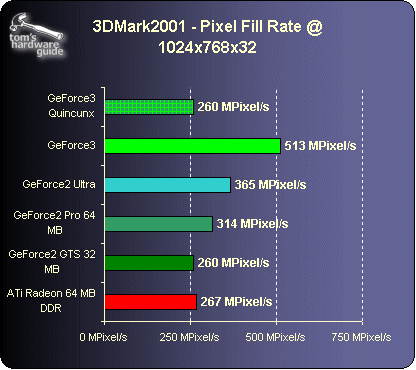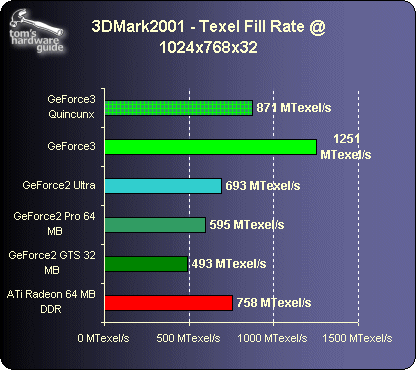GeForce3 Performance
3DMark2001, Continued
3DMark2001 allows a closer look at the 3D-cards with its sub-results. I focused on the fill rates to show GeForce3's real advantages:
We have heard a lot about the theoretical fill rates of 3D-chips, but what is always forgotten is that memory bandwidth never allows those high theoretical numbers, especially not at high resolutions and color depths. The above results show the REAL pixel fill rate at 1024x768x32. You can see how GeForce3 is outscoring all the other cards, even though GeForce2 Ultra has a higher theoretical fill rate, it falls clearly behind GeForce3 due to GeForce3's new crossbar memory architecture and Z occlusion culling. Even GeForce3 with enabled quincunx-FSAA is able to compete against the other cards, simply because GeForce3 is utilizing its memory bandwidth (which has a peak bandwidth that is identical to GeForce2 Ultra) much more efficiently.
The texel fill rate numbers are similar to the pixel fill rate scores, but you can see how GeForce3 benefits from the architecture of its texture shader (allowing 4 textures per pass, 2 textures per cycle ) when quincunx-FSAA is enabled and Radeon benefits from its three texture units per pipeline.
Get Tom's Hardware's best news and in-depth reviews, straight to your inbox.
Current page: 3DMark2001, Continued
Prev Page 3DMark2001 Next Page SPECviewperf Scores Under Windows2000
